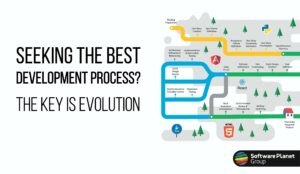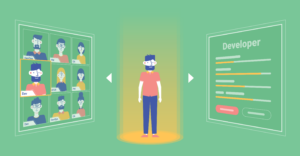Effectively managing software projects is no easy feat. It requires discipline, coordination, and bucketloads of determination. Yet this is only made more difficult when paired with an inadequate project management framework. To complicate matters even further, while standards such as PRINCE2 and PMBOK (pronounced “pimbock”) may claim to address these issues, they are often perfectionist and intricate, forcing companies to rely on intuition.
Thankfully, however, it doesn’t always have to be this way.
At a Glance
- What is P3 Express?
- How does P3 Express work?
2.1. Preparing
2.2. Cycle Planning
2.3. Weekly activities
2.4. Daily Activities
2.5. Cycle Closing
2.6. Closing
2.7. Post-project - Conclusion

What is P3 Express?
At Software Planet Group, for instance, we make use of P3 Express. According to its website, the framework not only builds upon the aforementioned PMBOK and PRINCE2 standards, but to the joy of Agile users everywhere, it also employs principles of XP and Scrum. In this way, P3 Express makes use of monthly, weekly and even daily repeatable cycles which are explained in extensive detail in a straightforward online manual.
Furthermore, the framework is licensed under Creative Commons, which means it is free and open source.
Check out a quick overview of the framework:
How does P3 Express work?
P3 Express consists of a total of 37 activities that are logically divided across 7 individual sections. Below is a helpful overview that will allow you to understand how it works:
1. Preparing
The preparatory phase begins before project approval. In it, we prepare the project summary and appoint some key players including the project manager, sponsor, team members and support team leader. This is done so that they do not face unrealistic targets in the future. We also prepare the so-called PMIS (project management information system), which is a set of all our project management-related documents. Then, after further planning and an initial audit, we end this phase with a go/no-go decision, a celebratory kick-off meeting and an email to all invested parties (known as “focused communication”).
2. Cycle Planning
Next it is time for planning. Because P3 Express is designed to be as compatible as possible with our existing processes, it uses useful monthly cycles, which are common to many companies today. Here, we add important details to our existing high-level plan that are solely centred on the upcoming month. This is then followed by yet another go/no-go decision, a kick-off meeting, and again focused communication, where we inform all of our team members about the month’s expected achievements.
3. Weekly activities
Throughout the month, we work on the project on the basis of weekly activities. These include things like performance measurements and deviation management, whose steps are also explained in the manual. Afterwards, we hold a weekly kick-off meeting, which shouldn’t ever take longer than 2 hours. This is done to discuss the tasks and potential problems of the upcoming week, ensure coordination and encourage the team to limit in-progress work. Our activities then end with an audit on how well we have managed our project and a focused communication on the current week’s tasks.
4. Daily Activities
Every day, the project manager is expected to remain constantly on the lookout for risks, as well as issues and of course, any sudden change requests (RICs in P3 verbiage). They should then react to RICs based on set delegation limits, and approve completed deliverables, as these can occur at any time.
5. Cycle Closing
At the end of each month, we hold cycle closing activities. This begins with an anonymous evaluation of both the customer and team’s satisfaction, enabling team members to uncover problems and plan for improvements as quickly as possible. The entire team works on the aforementioned improvements by means of helpful periodical workshops. Lastly, as per usual, we have a focused communication to brief everyone about our monthly cycle’s achievements.
6. Closing
At the closing of every project, we have another set of activities. This includes approvals and handovers, customer satisfaction evaluations, a closing audit in which we score our project management system, PMIS archiving and a final — and much-deserved — celebration. We finish with a focused communication in which we thank our team members for all their contributions and efforts.
7. Post-project
And finally, in the so-called post-project phase, we measure the benefits of the completed project and come up with strategies for improving them even further. The sponsor does this biyearly for the next two to five years and it wouldn’t be P3 Express without a final focused communication!
To gain a deeper understanding of the topic check out this video from one of the creators of P3.Express framework, Nader Rad:
Conclusion
Though it is true that project management can be challenging to say the least, by following the simple 7 steps above, SPG are able to unleash your project’s potential with some truly phenomenal results. Unlike other more convoluted frameworks, P3 Express follows the 80/20 rule, so you get 80 percent of the benefits with only 20 percent of the effort! And because P3 Express may be perfectly integrated with Agile, we can develop iterative projects and incrementally refine them to perfection.


